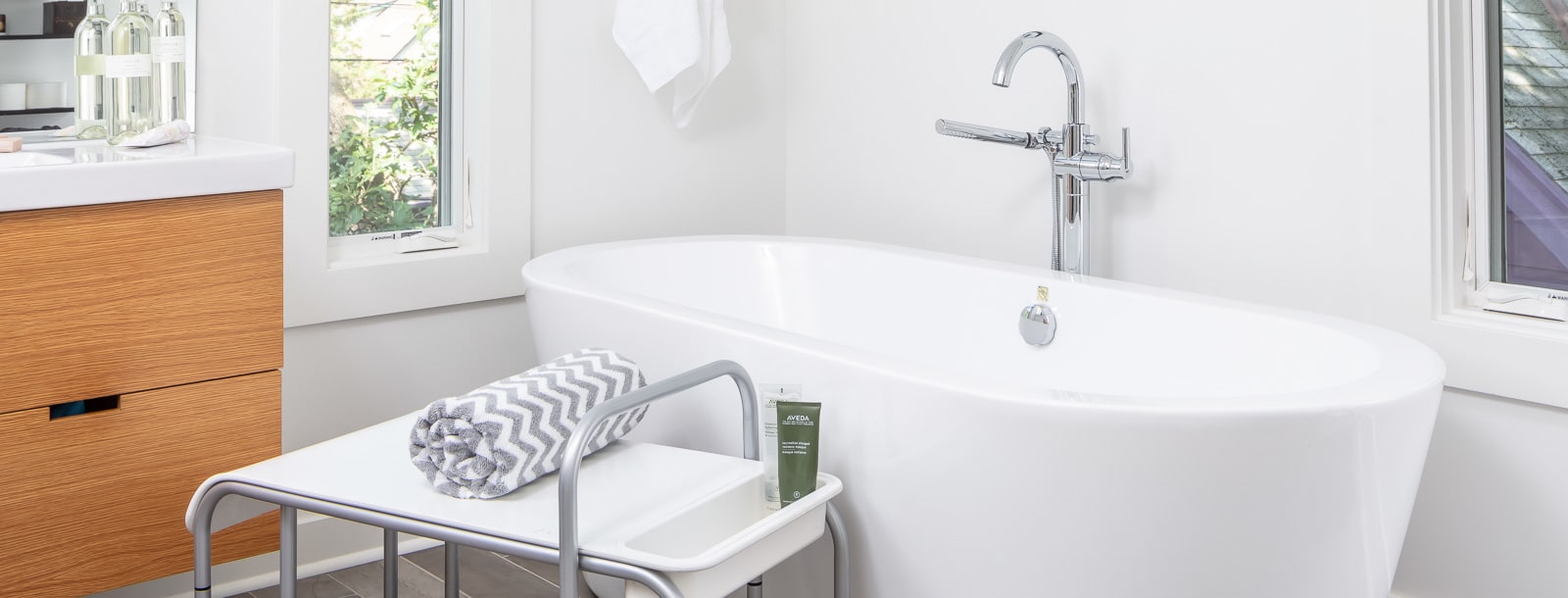
Whenever possible, we design spaces that work well for people of all ages and abilities. We devise elegant solutions that aren’t compromises or retrofits. They’re simply functional and beautiful — for anyone — while introducing unnecessary obstacles for no one.
Our commitment to universal design isn’t just professional. It’s personal.
Shelter president, CEO and co-founder Jackie Millea built her career inspired by her father, who was confined to a wheelchair for more than 20 years. Watching him navigate a world full of barriers, Jackie recognized that there are better ways for spaces to accommodate — and uplift — all the people within them.
Our universal design approach can influence a building’s floor plan, entrances and counter heights. But we don’t stop there. We also pay close attention to finishes, furnishings and other details. Take lever-style door handles, for example. They may be necessary for homeowners who can’t grasp a round doorknob. But they’ll also assist others who, on occasion, must use their elbows to enter a room while carrying a baby in one arm and groceries in the other.